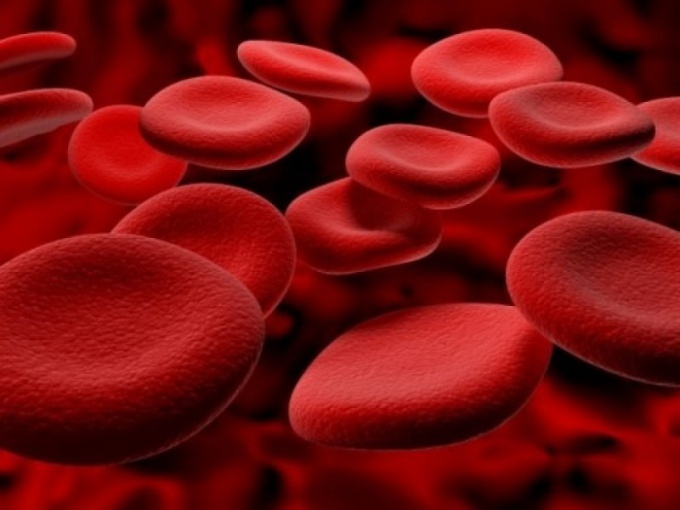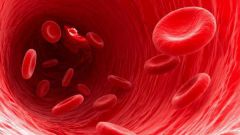Blood viscosity is of great importance for the normal functioning of the human body, and primarily for the cardiovascular system. Normal level of blood viscosity is considered to be 4-5 MPa•s, any deviation from this value can lead to serious disorders in the organs and systems of the human body.
Clinical symptoms of thick blood are drowsiness, fatigue, weakness, high blood pressure, depression, headache, dry mouth, confusion, nodules on veins, heavy legs and constantly cold extremities.
Thick blood is the cause of blood clots in the blood vessels and heart, clogging by thrombi of the lumen of blood vessels, acute heart failure, lowering or raising blood pressure levels, ischemic or hemorrhagic stroke, acute pulmonary insufficiency and aneurysm of the aorta.
Blood viscosity can be reduced by using preparations of Cinchona, sulphuric acid, prolonged moderate work, high level of oxygen in the blood, increasing the body temperature using hot baths.
Too thin blood observed in the conditions of recovery of the amount of plasma with a significant reduction in the number of blood cells. Clinical manifestations of reduced blood viscosity are not clotting, bleeding, bleeding from the nose, gums, kidneys, gastrointestinal tract, enlarged spleen, low blood pressure, iron deficiency anemia.
Reduced blood viscosity can increase, inhaling fumes of ether, taking alcohol, reducing body temperature, using less liquid, increasing the level of carbon dioxide in the blood, limiting the use of salt below the physiological needs, using diuretic, diaphoretic and antipyretic agents, eating more protein and starchy foods, eating less, but the long hours and increasing intensity of work.
On the viscosity of blood is influenced by hematocrit, blood temperature, blood flow and vessel diameter. Under the hematocrit refers to the proportion of erythrocytes in the total blood composition: the percentage of hematocrit is lower, the thinner the blood, and Vice versa, as the increase in percentage of hematocrit in the blood becomes more dense. Every degree reduction in body temperature reduces the viscosity of blood by two percentage points, and for every degree rise in body temperature increases its viscosity on the same figure. Rapid blood flow provokes a decrease in its viscosity due to decreasing adhesion, i.e., adhesion of cells and proteins and cells with each other. The smaller the diameter of blood vessels to reduce blood viscosity due to the decrease in the level of hematocrit. Also on the viscosity of blood is influenced by a variety of infections.
Increased blood viscosity
Clinical symptoms of thick blood are drowsiness, fatigue, weakness, high blood pressure, depression, headache, dry mouth, confusion, nodules on veins, heavy legs and constantly cold extremities.
Thick blood is the cause of blood clots in the blood vessels and heart, clogging by thrombi of the lumen of blood vessels, acute heart failure, lowering or raising blood pressure levels, ischemic or hemorrhagic stroke, acute pulmonary insufficiency and aneurysm of the aorta.
Blood viscosity can be reduced by using preparations of Cinchona, sulphuric acid, prolonged moderate work, high level of oxygen in the blood, increasing the body temperature using hot baths.
Reduced blood viscosity
Too thin blood observed in the conditions of recovery of the amount of plasma with a significant reduction in the number of blood cells. Clinical manifestations of reduced blood viscosity are not clotting, bleeding, bleeding from the nose, gums, kidneys, gastrointestinal tract, enlarged spleen, low blood pressure, iron deficiency anemia.
Reduced blood viscosity can increase, inhaling fumes of ether, taking alcohol, reducing body temperature, using less liquid, increasing the level of carbon dioxide in the blood, limiting the use of salt below the physiological needs, using diuretic, diaphoretic and antipyretic agents, eating more protein and starchy foods, eating less, but the long hours and increasing intensity of work.
Factors determining blood viscosity
On the viscosity of blood is influenced by hematocrit, blood temperature, blood flow and vessel diameter. Under the hematocrit refers to the proportion of erythrocytes in the total blood composition: the percentage of hematocrit is lower, the thinner the blood, and Vice versa, as the increase in percentage of hematocrit in the blood becomes more dense. Every degree reduction in body temperature reduces the viscosity of blood by two percentage points, and for every degree rise in body temperature increases its viscosity on the same figure. Rapid blood flow provokes a decrease in its viscosity due to decreasing adhesion, i.e., adhesion of cells and proteins and cells with each other. The smaller the diameter of blood vessels to reduce blood viscosity due to the decrease in the level of hematocrit. Also on the viscosity of blood is influenced by a variety of infections.



